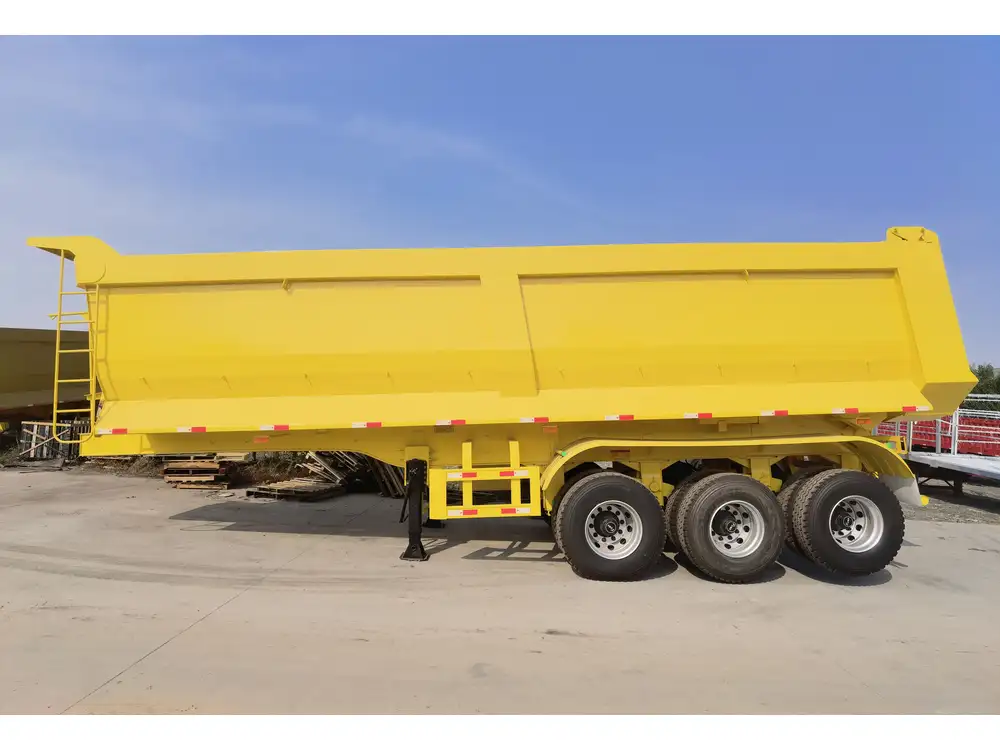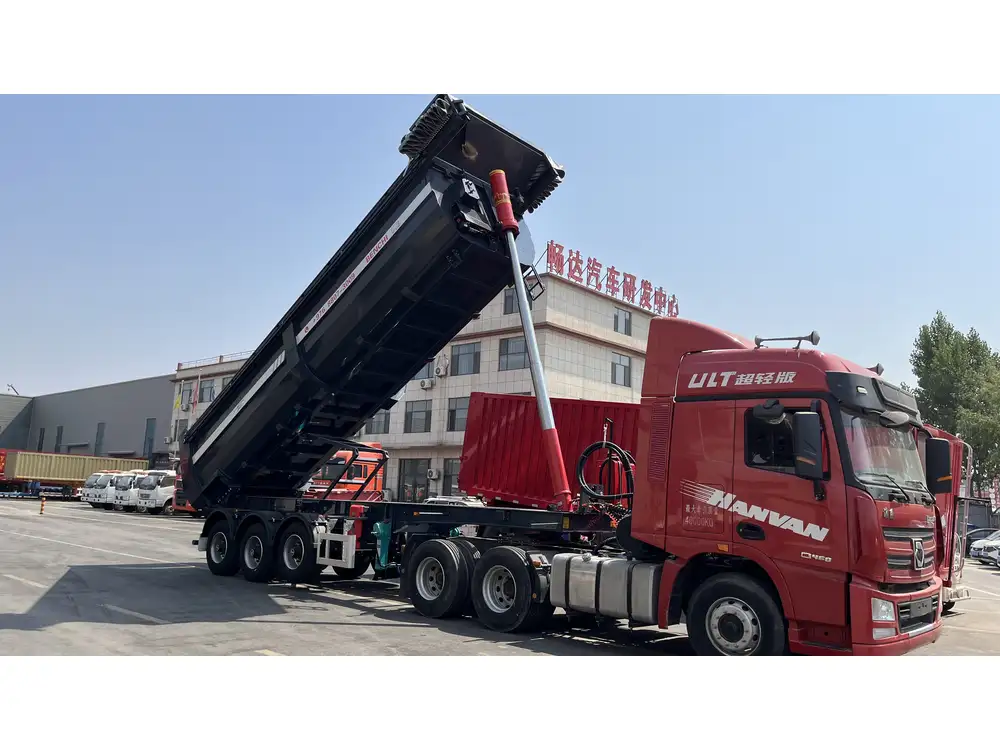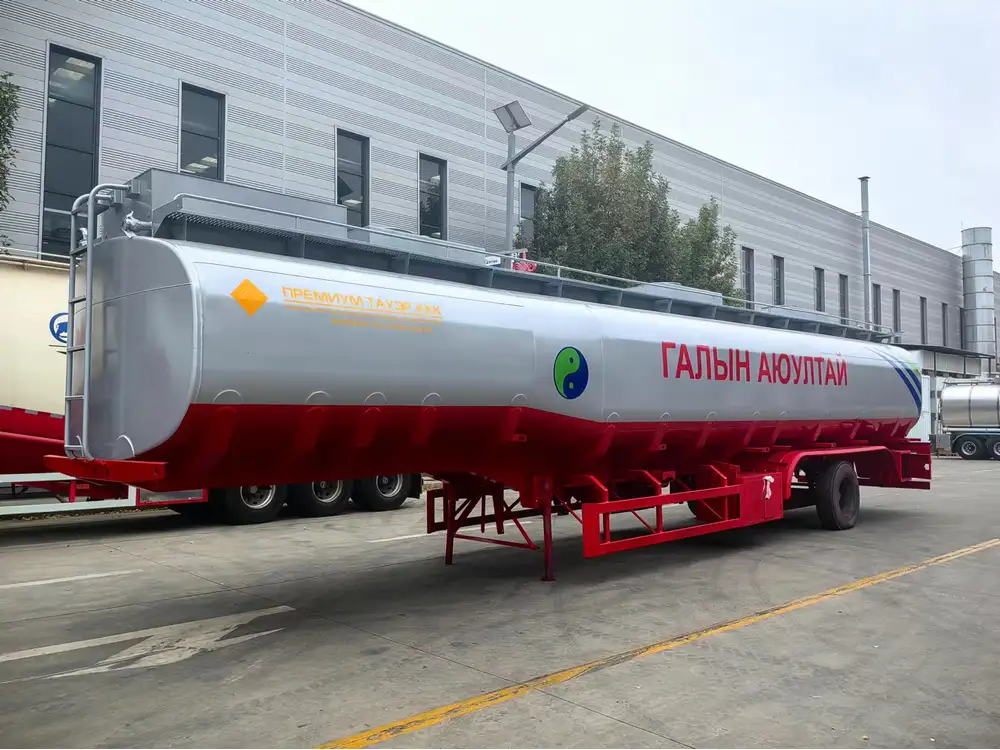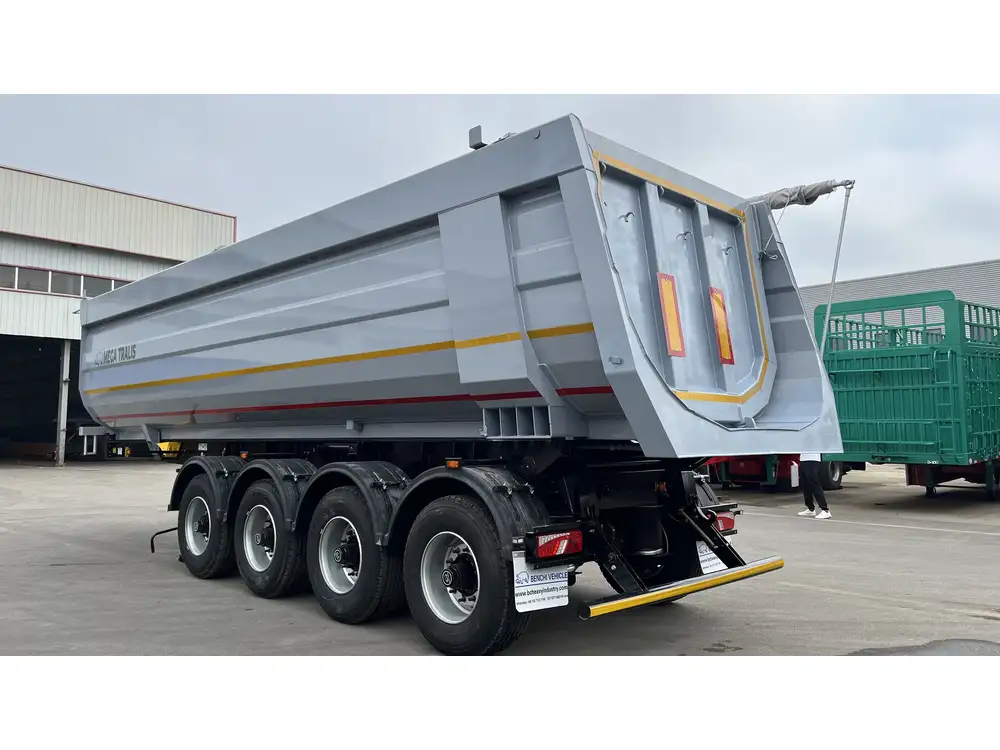In the transportation industry, the measurements of semi-truck trailers play a crucial role in ensuring compliance with safety regulations, optimizing logistics, and maximizing cargo efficiency. One key measurement that often comes into consideration is the width of a semi-truck trailer. Understanding this aspect is vital for manufacturers, drivers, and fleet managers alike. In this article, we delve into the intricacies of semi-truck trailer widths, the various regulations that govern them, and how these dimensions impact overall logistics and performance.
Overview of Trailer Dimensions
To grasp the significance of trailer width, one must first navigate the broader spectrum of trailer dimensions. Typically, a semi-trailer consists of three primary dimensions: length, width, and height. Here’s a brief look at each:
| Dimension | Description | Importance |
|---|---|---|
| Length | Total distance from front to back | Influences cargo capacity and state regulations |
| Width | Measurement from one side to the other | Affects road safety, loading capacity, and compliance |
| Height | Total vertical span of the trailer | Determines compatibility with overpass and bridge limits |
Standard Widths of Semi-Truck Trailers
When discussing the width of semi-truck trailers, the most commonly accepted measurement is 8.5 feet (102 inches). This width is crucial because it conforms to federal regulations laid out in the United States by the Department of Transportation (DOT). However, variations do exist depending on the specific type of trailer:
- Standard Flatbed Trailers: Widths typically remain within the 8.5-foot limit, maximizing efficiency while adhering to safety standards.
- Reefer Trailers: These refrigerated trailers also follow the same standard width, but the internal space management becomes pivotal for maintaining temperature-sensitive cargo.
- Specialty Trailers: Certain trailers used for hauling large machinery or oversized cargo can exceed the standard width, often reaching 10 feet (120 inches) or more. Such configurations require special permits and planning during transit.

Regulatory Constraints
The Federal size regulations are in place not only to enhance safety but also to ensure that vehicles can operate smoothly on the nation’s road networks. Understanding these regulations provides insight into why certain dimensions are standardized.
Key Regulations:
Federal Regulations: The Federal Highway Administration sets width limits at 102 inches for standard trailers on interstate highways.
State Regulations: Some states may enforce stricter regulations, particularly in urban areas or on specific roads. It’s critical for operators to check local laws.
International Standards: For international transport, the regulations under the United Nations Economic Commission for Europe (UNECE) also establish limits, often mirroring or exceeding the federal guidelines.
Calculating Cargo Capacity Based on Width
The width of a semi-truck trailer directly impacts its cargo capacity. Wider trailers can physically accommodate more material, but it’s essential to keep in mind the weight distribution and the possibility of exceeding regulatory limits. Below is a simple breakdown illustrating how width influences payload capacity.

Example Cargo Capacity Calculation
| Trailer Width | Maximum Length | Maximum Height | Typical Payload Capacity |
|---|---|---|---|
| 8.5 feet (102 in) | 53 feet | 13.5 feet | 45,000 – 50,000 lbs |
| 10 feet (120 in) | 53 feet | 13.5 feet | 55,000 – 60,000 lbs |
Note: Values are straightforward estimations and may vary based on design, trailer type, and material density.
The Impact of Trailer Width on Performance
The width of a trailer does not only affect its capacity but also its performance on the roads. Here are critical aspects influenced by width:
1. Maneuverability
Wider trailers may face challenges concerning maneuverability, particularly in tight urban environments. With increased width, the turning radius also expands, which can complicate navigation through narrow streets or during tight turns.

2. Stability
Stability is a function directly intertwined with the trailer’s width. A wider base often provides a more stable towing characteristic, particularly with heavy loads. However, operators must remain vigilant regarding wind resistance, as wider trailers can be more susceptible to crosswinds.
3. Legal Compliance
As previously highlighted, width regulations are paramount. Non-compliance can lead to hefty fines, loads being stopped by authorities, and liabilities in case of accidents. Therefore, ensuring adherence to width regulations is essential for operational success.
Considerations for Selecting the Right Trailer Width
Choosing the right width is contingent on multiple factors. Consider the following elements when making your decision:

1. Type of Cargo
Certain types of cargo naturally demand wider trailers, particularly oversized items or bulk commodities. Analyzing the nature of the cargo can provide guidance on selecting the appropriate width.
2. Route Planning
Understanding the routes a trucking operation will take is essential. Areas with restricted roadways might necessitate narrower trailers, while more expansive road networks allow for broader dimensions.
3. Cost Implications
Wider trailers may cost more to manufacture, maintain, and operate. Understanding the cost-benefit relationship of using wider versus standard trailers is critical to ongoing operational success.

4. Profitability Concerns
Increasing trailer width can lead to higher payloads, yet it can also raise regulatory scrutiny and vehicle maintenance costs. A thorough analysis of potential profit margins against expenses is vital.
5. Manufacturer Guidelines
Always consult with manufacturers for specifications and recommendations. They’ve tested trailers under various conditions and can provide invaluable insights.
What Happens During Width Investigation
In the field, width investigations may arise due to several factors, notably following accidents or during state inspections. Here’s a brief overview of the steps taken during such inquiries:
Initial Assessment: Inspectors will measure the trailer width at various points, often comparing these measurements against the listed specifications.
Compliance Check: The semi-trailer is checked against state and federal regulations to ensure legal operation.
Documentation Review: Operators must present registration, permits, and load details during the inspection to verify compliance.
Penalties: If discrepancies arise, vehicles may face fines, and operators can incur additional business costs.

The Future of Semi-Truck Trailers: Innovations and Considerations
As advancements in logistics technology continue to evolve, new trends may emerge that can influence semi-truck trailer design. The adoption of materials like lightweight composites or the integration of smart technologies can lead to efficient, wider trailers without compromising legal compliance.
Potential Future Trends:
- Autonomous Trailers: Innovations in autonomous vehicle technology may reveal standardized widths to optimize automated fleets efficiently.
- Smart Logistics: IoT-enabled trailers can enhance compliance and monitoring, leading to greater operational transparency.
- Sustainability Initiatives: As the industry moves towards greener practices, trailer specifications, including width, may be adjusted to accommodate new energy-efficient technologies.
Conclusion
Understanding the width of semi-truck trailers is undeniably crucial within the realm of logistics and transportation. It intertwines with regulatory compliance, impacts cargo capacity, and influences operational performance on countless levels. By navigating the complexities of this measurement, operators can make informed decisions that enhance efficiency, safety, and profitability.
Whether you’re in the manufacturing space, a logistics manager, or a truck driver, grasping the nuances of semi-truck trailer width not only empowers better operational practices but also ensures alignment with ever-evolving industry standards.



